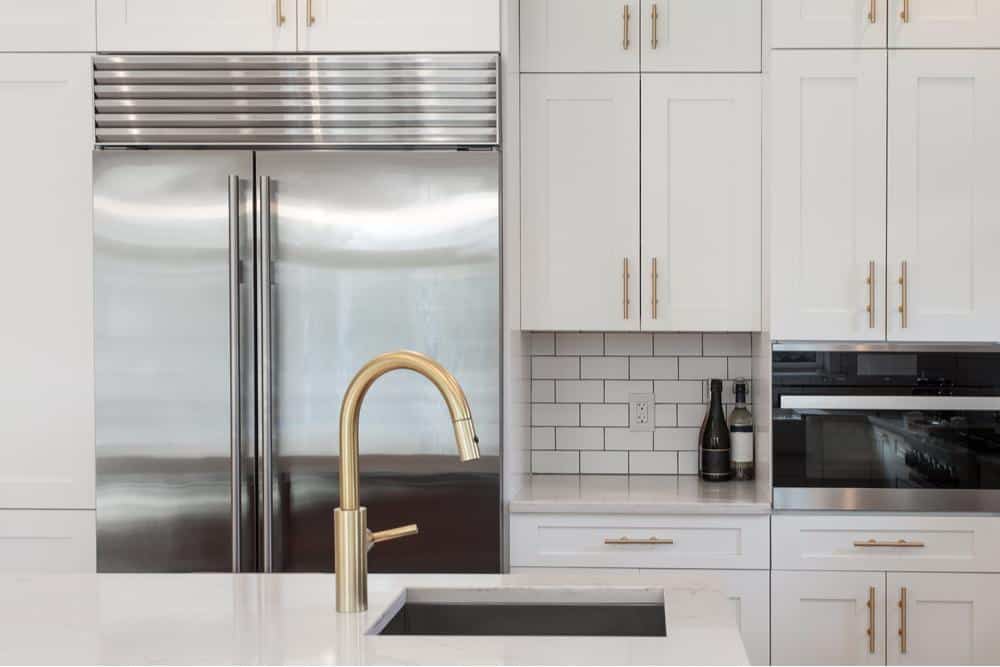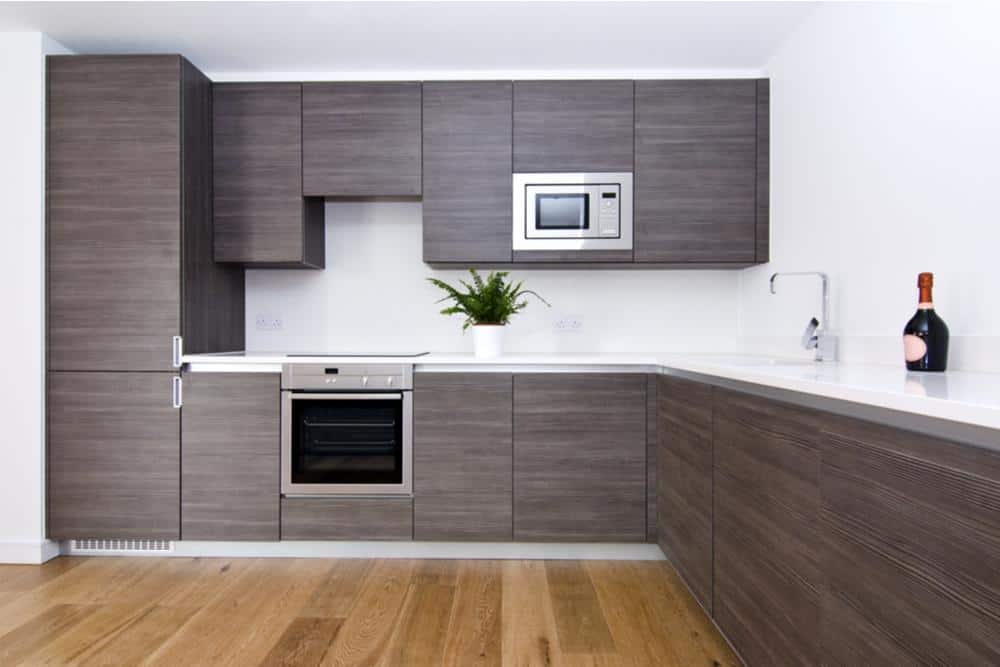As a homeowner, it can be easy to overlook certain areas of your home. Unfortunately, there are so many "out of sight, out of mind" spots in your house that it's easy to forget about giving them a regular scrub.
But then, one day, you decide to pull that stove out for cleaning and see that it's been slowly damaging the kitchen cabinet or refrigerator next to it. Now, burn marks and warping have you wondering if you're in for a hefty replacement bill.
Fortunately, those common signs of heat damage are preventable using heat shields.
In this article, I will show you just how easy it is to prevent this kind of damage from occurring.
By the time you have finished reading, you'll know exactly what you need to do to keep your oven from damaging your cabinets or fridge.
So, what do oven heat shields for cabinets and refrigerators do? Read on to find out.
A heat shield is a product you install between your oven and the fixture or fixtures you installed next to it. Heat shields may also be used for a large toaster oven that resides on the countertop underneath a kitchen cabinet.
In most cases, you'll likely have cabinets or your fridge beside your oven, both of which can become damaged from your oven's radiant heat.
Most heat shields are made of aluminum, fiberglass, or a combination of the two. You can buy them precut or as a roll that you'll cut down to size.
Heat shields offer a way for you to protect your cabinets or refrigerator from that heat because they can withstand incredibly high temperatures. So, when you turn on your oven, the shield redirects heat away from the cabinets or appliance next to your oven, minimizing any damage the heat might do.
Most manufacturers will recommend installing a heat shield to prevent damage. You can purchase one at any home improvement store and install it yourself. Or, if you happen to read this before installing your new appliances, you can ask your contractor to install one for you.
Your oven can damage your cabinets in two ways: steam and heat. Steam can cause water to condense along the sides of any cabinets that rise above your oven, while heat can cause the most damage to cabinets on the floor. A heat shield will protect against both.
Heat damage can come in the form of discoloration and warping, especially if your cabinets are made of any type of synthetic material. If your sidewalls are wood, you could risk the wood drying out and turning brittle or getting scorched.

Kitchen cabinets surrounding a refrigerator in the back right - and an oven in the front left
Steam damage can also cause warping, especially if your cabinets are solid wood. It could also cause the wood to swell, putting the sides of your cabinets closer to your oven.
A heat shield will prevent both steam and heat from damaging your cabinets. It'll reflect radiant heat and allow moisture to condense on the waterproof material instead of your wood cabinets.
As you can probably guess, having a hot oven next to an appliance meant to keep things cold can cause efficiency problems. In addition, the heat can cause cosmetic damage to your fridge in the form of scorching or discoloration.

A kitchen refrigerator surrounded by cabinets
The heat from your stove and oven can cause your refrigerator's compressor to work harder, leading to a few problems.
A heat shield will prevent physical damage to your refrigerator, but it'll make it work more efficiently. Over time, this will lead to cost savings in the form of fewer repair bills, lower energy costs, and a longer life for your appliance.
The main reasons heat can damage your cabinets or refrigerator is usually one of the following:
The best way to prevent heat damage from your oven is to address each issue before installing it. However, if you've already installed your appliances, it's not too late to make the changes.
Insufficient air flow happens when you install your refrigerator or cabinets too close to your stove. This lack of space means the heat won't be able to dissipate as efficiently as it needs to. When that happens, your cabinet or fridge will absorb the heat.
The best way to prevent this issue is to space your appliances properly.
Although cabinets can go directly next to your stove using a heat shield, the same isn't true for your refrigerator. Most contractors recommend a minimum of nine inches between it and your stove.
That said, approximately 20 inches is a better distance to ensure maximum airflow.
Some cabinet manufacturers use a vinyl coating over MDF, called Thermofoil, to give their cabinets a smooth, even finish.
Unfortunately, Thermofoil and laminate cabinets are quite sensitive to high heat. So, if your cabinets are directly next to your oven, the vinyl could melt or warp off the particle board underneath.
The best way to prevent this damage is to install a heat shield between your stove and cabinets. However, you should also consider skipping coated MDF and choosing solid wood instead.
Your oven should have a type of insulation that protects the main compartment and the area around it, which keeps heat inside the oven and minimizes how much leaks out.
If your oven insulation is inadequate, excessive heat could radiate out and damage your cabinets or refrigerator.

An oven located beneath and next to kitchen cabinets
Before installing your oven, make sure it has the proper insulation protecting the area around it. If it doesn't, check with the manufacturer or your contractor to find out how to insulate it properly. Like your refrigerator, if your oven isn't adequately protected, it won't work to capacity.
Once you have your oven adequately insulated, choose a good heat shield to bolster that protection. Combining a heat shield and insulation will ensure your oven works as you need it.
Although seeing heat damage on your refrigerator or cabinets might seem hopeless, there are cases where you might be able to fix the damage. Although it's not always the case, you might be able to get your kitchen looking brand new again.
Your cabinets are likely made of either wood or MDF coated in vinyl. MDF is typically the less-expensive option, but it's also more prone to warping from heat. If your cabinets are MDF, it's essential to protect them from heat damage using a heat shield.
If your cabinets are wood and simply scorched, you may be able to paint over the scorch marks to have them look new.
However, if the damage on your cabinet door goes beneath the paint or varnish, you might have to refinish them. The alternative is to replace the cabinets or cabinet doors, which could get pretty pricey.
Thermofoil or laminate cabinets might be a bit more tricky. If the damage isn't widespread, you might be able to scrape away the old cement and apply new to reattach the coating. However, if the damage is extensive, it'll be easier to replace the doors entirely.
Scorch marks or other discoloration on your refrigerator might be a bit trickier to remedy, but it's possible in some cases. The main determining factor is what your refrigerator is made of.
Stainless steel appliances typically hold up to heat really well. That said, scorch marks and discoloration can still happen. When that's the case, you can often get the spots out with a bit of vinegar and a soft rag.
If you have a refrigerator that isn't stainless steel, you can use some baking soda and vinegar to get the stain off. Combine them in a 50/50 mixture and scrub gently with a soft rag or sponge.
